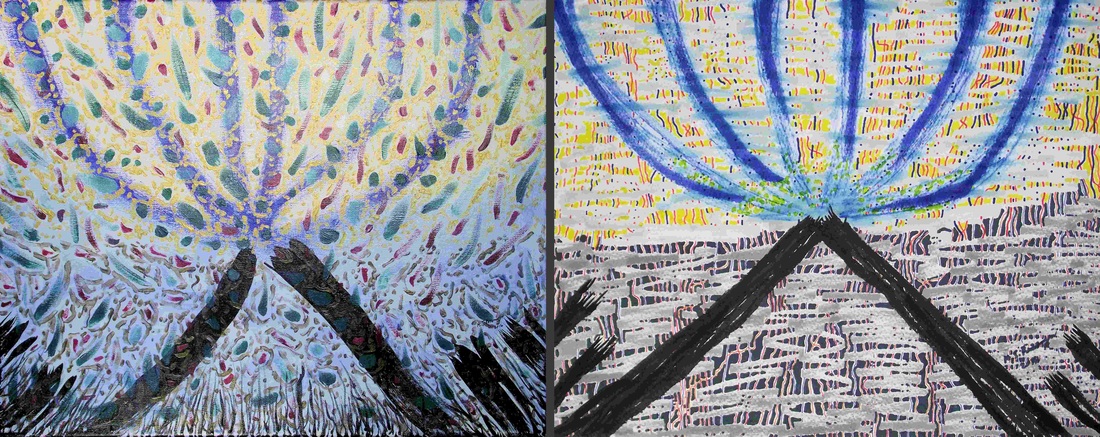As an adult returning to dedicated art production, I chose markers as my primary tool. As a returning-to-2D artist I wanted a new challenge. Markers covered that, presenting a challenge both in use and palette. Contemporary fine art marker products can be lightfast or light-resistant, non-acidic and qualify as archival. Further—optional—color-fast protection can be provided with a UV spray.
Never hang painted or other colorful art work where it might get direct sun. This applies to both framed and unframed works. Its colors will fade no matter what. Standard acrylic fronts on frames offer 96% UV protection and have the advantage over glass of being less inclined to breakage, are lighter in weight and comply with most homeowners insurance. Glass-covered works may not comply. UV ratings for glass vary from 25% to 99% depending on coating or lamination.
The marks made by felt-tip markers are extremely limited compared to brushes. Marker colors are also limited, each brand offering a slightly different palette. Winsor & Newton offers a color blender to use with their pigment markers, so their array has expanded somewhat.
- At the time of return I also had quite an assortment of colored pencil and DerWent watercolor pencil from my days illustrating children’s books. Eventually they crept into the media fray.
- At some point I needed the liquid touch beyond what the watercolor pencils allow. Inks now generally supply that. I also needed a finer point, a finer mark. Micron pens are terrific, going where no felt tip has gone before. Gel pens too. The pens also function to go into the paper surface, something markers cannot.
- Eventually I was taken by the iridescent opportunities offered in contemporary inks, gel pens and some acrylic paints. They’ve supplied the sparkly element to some of my works.
Non-acid paper offerings required re-education too. Various Bristol sorts, mixed media, printer paper and watercolor all present various limitations and blessings. Arches watercolor paper, a longstanding high-end standard is terrific. It is hardy, resistant to destruction, yet can eat up markers by the dozen. Some pigment markers work well on canvas and other surfaces, so one is not totally limited to paper choices.
For the fun of it I recently did two similar compositions. I started with a difficult energy pattern and thoughts of RISING UP. One is on a 16” x 20” canvas, one on 11” x 14” Winsor & Newton Watercolor Marker paper. For the canvas I used acrylic paint; for the W & N paper, marker and Micron pen.
Getting back to painting on canvas reminded me what a sensuous experience it can be: it’s fluid, fast, moving, messy, and all areas can adapt to change. A mark by a marker is a mark is a mark, always. It’s a careful process.
Depth and shadows freely enter into a painting done with acrylic or oils. However, it is very hard (impossible?) to safely build up markers and pen strokes to get the dancing little shadows that accompany thick paint.
Doing the two consecutively brought to mind the difficulty I experienced in moving from nonfiction writing to fiction. Totally different fields and mind sets. See the results below.
Note: the “glow” apparent in the upper part of the painted piece on the left (the painted one) reflects the gold paint used. Marker piece is on the right.

